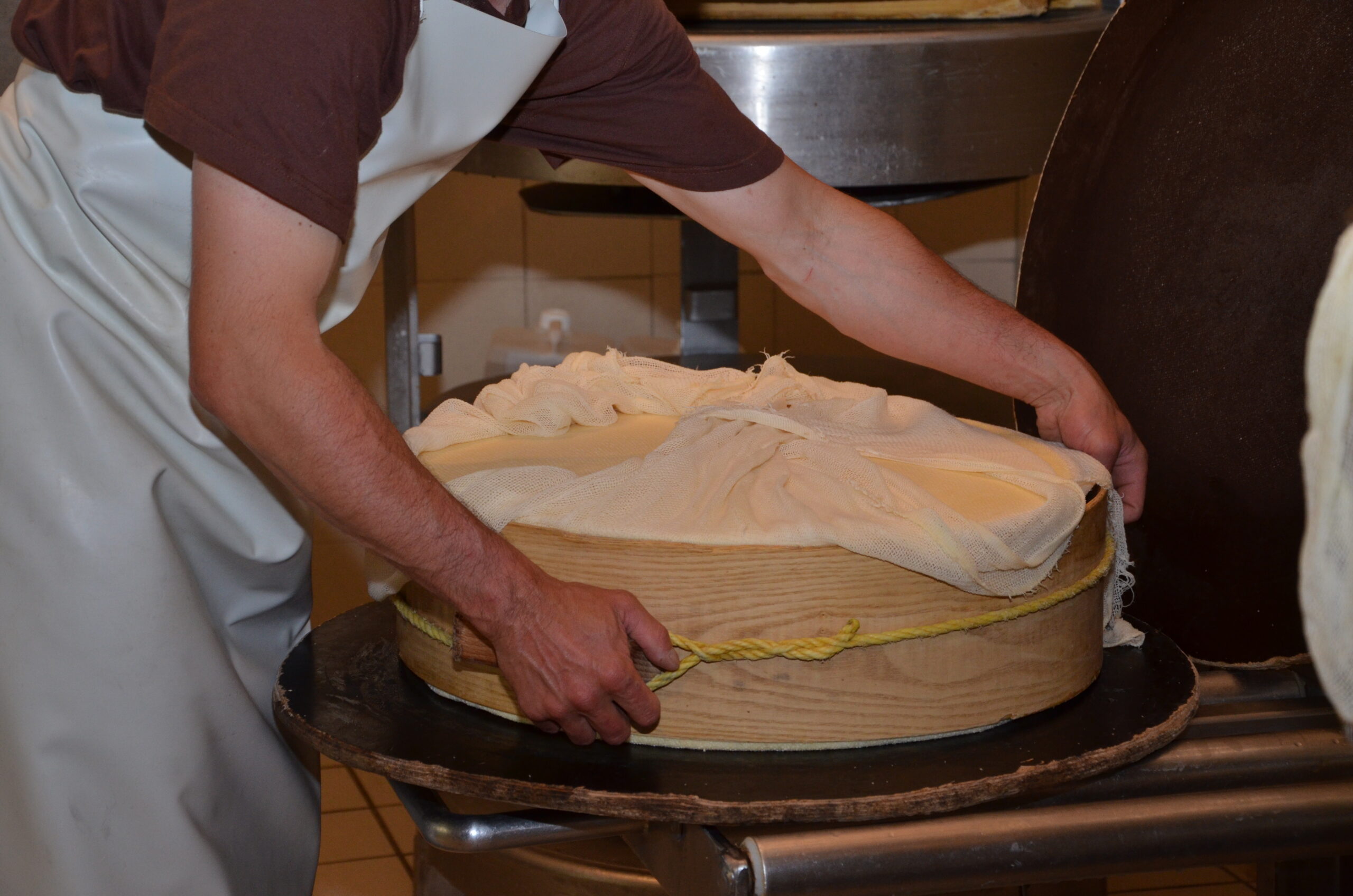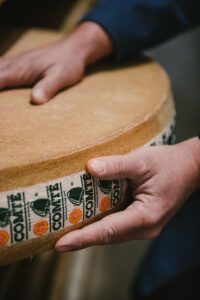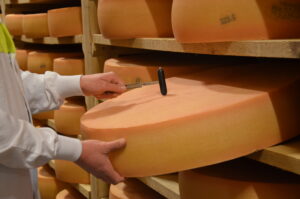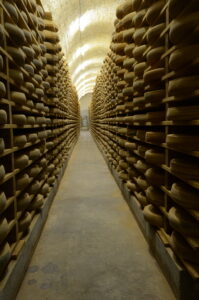

Each cheese tells a story—of its land, its people, and its craft. Discover how these iconic cheeses come alive on your plate and in your glass.
Comté AOP: A Cheese of Collective Excellence
History and Origins
Comté, the most sold French AOP cheese by volume, has roots in the Jura mountains dating back to the Middle Ages. The cooperative spirit behind its production emerged as early as the 13th century, when farmers pooled milk from their Montbéliarde and Simmental cows to create large wheels of cheese capable of lasting through harsh winters.
The Affinage Process
Comté is aged in special cellars where the temperature gradually rises to 16.5°C over time, stimulating the cheese’s aromatic complexity. Grading is key: a wheel with a green label signifies a score of 14/20 or higher, marking it as a top-tier cheese, while a brown label is given to slightly lesser grades.
Flavor Profiles and Pairings [to change with update Profile, Jean Roch]
- Comté Doux (4-6 months): Soft, buttery notes with hints of cream and flowers. Pairs with a fresh baguette and Gewürztraminer.
- Vieille Réserve (10+ months): Floral and fruity, with nutty undertones. Perfect with a glass of Côtes du Rhône.
- Prestige (18+ months): Bold, roasted flavors with crystalline texture from tyrosine. Explore the pairing with a glass of Vin Jaune or a smoky whisky.
Fun Fact
The white crystals in aged Comté are not salt but tyrosine—an amino acid that develops during the aging process, adding a delightful crunch and a unique taste.
Beaufort AOP: The Prince of Alpine Cheese

History and Traditions
Known as the “Prince of Gruyères,” Beaufort’s history spans centuries. First produced by monks in the Middle Ages, its distinctive concave shape allowed easier transport tied to mules. Today, Beaufort is celebrated for its connection to the Tarentaise valley and the alpine lifestyle.
Types of Beaufort
- Winter Beaufort: Produced from November to May when cows are fed on hay, resulting in a paler and milder cheese.
- Summer Beaufort: Crafted from June to October, its vibrant color and rich, fruity flavors come from cows grazing on fresh alpine pastures.
Chalet d’Alpage: A rare gem, made above 1,500 meters altitude with milk from a single herd. Its flavors are deeply aromatic and linger on the palate.
Pairings and Dishes
Pair Beaufort with a Savoie white wine or Meursault. At M&T Bistro, savor it in our cheese platter with a variety of other cheeses
Ossau-Iraty AOP: The Pastoral Charm of the Pyrenees
History and Cultural Roots
Ossau-Iraty, an ancient sheep’s milk cheese, originates from the pastoral traditions of the Basque and Béarn regions in Pyrenees. Its name honors the Ossau Valley and Iraty Forest, reflecting its dual heritage. The Basco-Béarnaise sheep breeds, along with Manech sheep, provide the milk that forms this exceptional cheese.
Unique Production and Aging
Aged between 4 and 10 months, Ossau-Iraty develops distinct characteristics based on its environment:
- Basque versions have drier cellars and are brushed dry for a firmer texture.
- Béarnais versions age in humid conditions, with their crust treated with salted water, resulting in a creamier texture.
Pairings and Culinary Uses
Ossau-Iraty pairs beautifully with cherry jam, Jurançon wine, or piment d’Espelette. At M&T Bistro, enjoy it in a slow cook with mediterranean vegetables stew & pesto topped with Ossau Iraty shavings
Fun Fact
Ossau-Iraty is the only sheep’s milk cheese with AOP status in the region. It is lactose-free after aging, making it suitable for a wide range of dietary preferences







